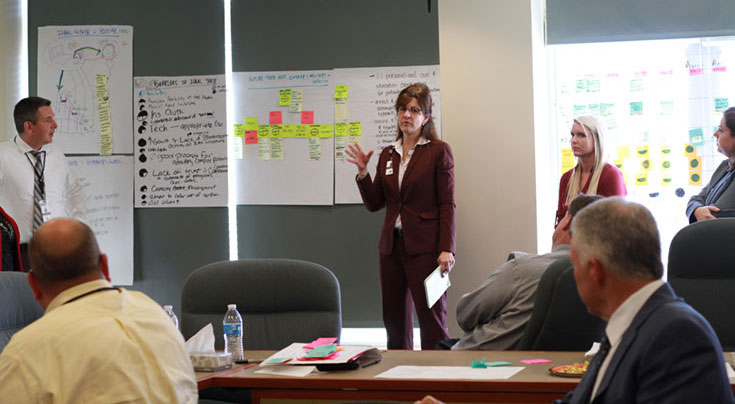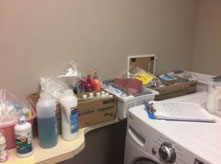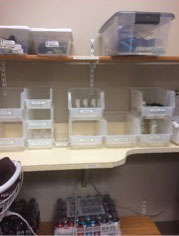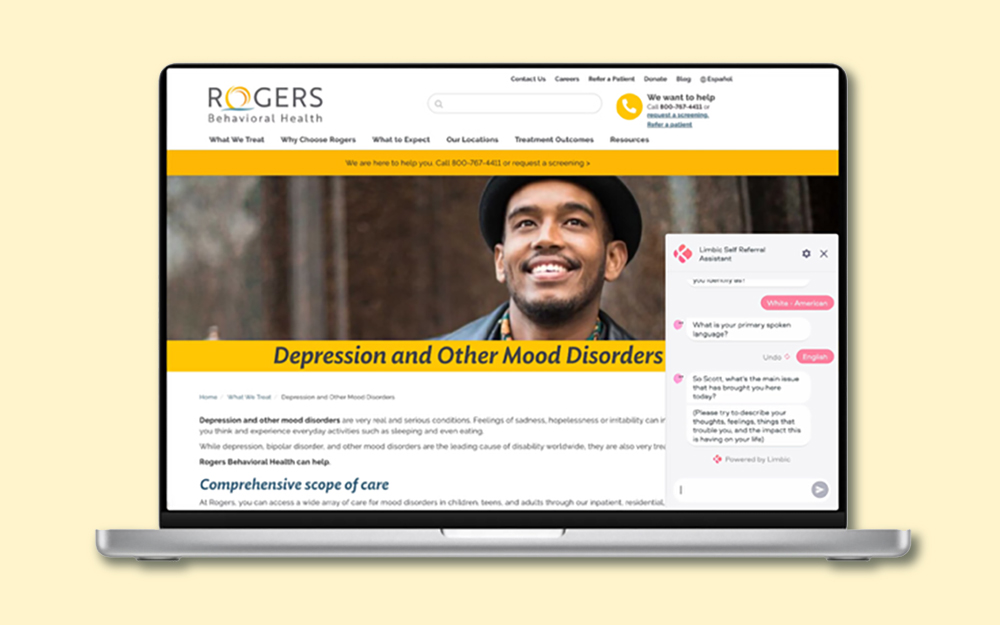
Rogers Improvement System surprises participants with early positive changes
02/20/17 05:19:am
Posted in
"To know my opinion and input are being taken into consideration is an incredible experience for me. It shows Rogers really values the people doing the work on a daily basis.”
~ Kathleen Mack, intake specialist at Rogers–West Allis
Changes big and small are starting to show up throughout Rogers. Through a new framework for analyzing and improving processes known as the Rogers Improvement System or RIS, leaders, medical staff members, and employees are all getting involved and rethinking how work gets done.
There are two main areas of work occurring at this time:
- Admissions and Transitions: this team completed its Value Stream Analysis (VSA) in November followed by Rapid Improvement Events (RIEs) on non-specialty screening and MD review, specialty screening and review, and internal transfers into and out of inpatient
- Inpatient Services: this team completed its VSA in December and an RIE to improve use of space in West Allis in January.
“We are making this work a priority for the organization, because it allows us to design everything around what’s best for patients, and ultimately, that makes work more satisfying for all of us,’ remarks Paul Mueller, CEO, Rogers Memorial Hospital and RIS executive sponsor,
Early participants have rave reviews about the process.
Kathleen Mack, intake specialist at Rogers–West Allis, is especially happy that a shorter assessment will have a positive impact on patients, noting it’s hard to have patients who are anxious and waiting for care. She adds, “Time is precious, especially for our PTSD patients. I think we’ll see patients stay motivated to get treatment because it won’t take so long. They’ll be less likely to get cold feet.”
“We can sometimes get stuck in our old ways of providing treatment and services. This has certainly enlightened me to think differently about how we provide services and engage our staff, patients, and families,” shares Dr. Khazi Muqeet, campus medical director, Rogers–West Allis.
Angela Pinta, clinical services manager for the adolescent inpatient unit at Rogers–West Allis, says RIS has changed the way she leads, and it’s making a big difference. “I see an overall excitement amongst staff and an improvement in morale. Staff understand their concerns being addressed because they can see the improvements being initiated in their work environment,” remarks Angela.
Lynn Dashek, patient care associate, Roger–West Allis, participated in a 6S project that looked at how efficiencies can be created through better use of space. “When patients are ready to be discharged, they don’t want to wait for us to look for lost items. Getting new shelving to help us organize patient belongings was like Christmas on our unit! It’s going to be so much better for everyone,” Lynn says.




Other early wins:
- The Admissions team created a new screening assessment for Residential and Specialty Services.
- Time for patient to be accepted into a program reduced from 4.4 hours to 1.5 hours.
- Time a patient waits to hear about being accepted into a residential program reduced from 6.3 days to 3.3 days
- After a 6S project in West Allis, patient belongings are now all stored together, making it easier for staff to find. In addition, nurses have increased desk space to complete charting at RN station computers instead of standing at counters using laptops.
- The Inpatient Transfer RIE Team developed a standard way to communicate the requirements of four different specialty programs across five Wisconsin locations. Patient feedback on the new specialty program orientation packet is extremely positive. Sample comments: “This is great! It has everything I need.” and, “It was very informative. I really like the schedule that it included.”
Terri Schultz, vice president and executive leader for RIS, shares, “Leading the Rogers Improvement System is an incredible opportunity because the work we do together has a direct impact on the quality of the care we provide to patients and families. It’s a new challenge for all of us to take our approach to patient care to a new level and then be able to measure the results,” she adds.
Paul adds, “The best thing about the Rogers Improvement System is what it will mean in creating the optimal experience for patients and families. Through this disciplined look at our processes, we can make sure we’re doing everything right the first time, which is what we are striving for as we care for all patients.”
Learn more about the Rogers Improvement System:
Rogers Improvement System intranet page
Rogers System TPOC
Key Terms
Q & A
If you would like to get involved, talk with your leader or contact Terri Schultz at x 1397 or tschultz@rogershospital.org.





